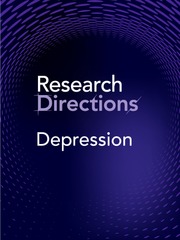The increasing rates of anxiety, depression and self-harm reported by young people in developed countries over the last decade has led to speculation about the associations between this evidence of deteriorating mental health and wellbeing and the rapid spread and use of new digital technologies, social media and personal messaging platforms (Orben and Przybylski, Reference Orben and Przybylski2019; Nesi, Reference Nesi2020). It has become commonplace to assert that these rapid technological changes, and their associated adverse impacts on social group function and interpersonal behaviour, are the cause of these fundamental epidemiological shifts.
Further, there have been specific assertions that these new behaviours are causing changes in brain function (i.e., decreased attentional capacity, reduced emotional responsiveness, increased arousal to social stimuli) that may persist into later adult life and increase vulnerability to anxiety and depression over the life span (Firth et al., Reference Firth, Torous, Stubbs, Firth, Steiner, Smith, Alvarez-Jimenez, Gleeson, Vancampfort, Armitage and Sarris2019; Korte, Reference Korte2022; Firth et al., Reference Firth, Torous and Firth2020). Other indirect effects of these platforms that may be relevant to brain function and subsequent risk of depression or other mood disorders include disturbances of sleep-wake cycles during critical developmental periods, reduced physical activity during daylight hours, reduced exposure to daylight and physical environments outside of home, school or study (indoor) environments and reduced participation in complex group interactions in the family, peer, social and wider educational environments (Firth et al., Reference Firth, Torous, Stubbs, Firth, Steiner, Smith, Alvarez-Jimenez, Gleeson, Vancampfort, Armitage and Sarris2019; Alonzo et al., Reference Alonzo, Hussain, Stranges and Anderson2021; Maza et al., Reference Maza, Fox, Kwon, Flannery, Lindquist, Prinstein and Telzer2023).
Those engaged in more detailed epidemiological studies, however, have often noted that the assertions about causation are not necessarily supported by sound longitudinal data and often do not consider other social or environmental factors (e.g., decreasing social cohesion, increased concern regarding other factors such as climate change or economic security) that may be operative and preferentially affecting younger cohorts. Those engaged in other neurobiological studies, particularly during critical childhood and adolescent periods, may well dispute the notion that fundamental aspects of brain development are being altered by these changes in social and educational exposures (Maza et al., Reference Maza, Fox, Kwon, Flannery, Lindquist, Prinstein and Telzer2023).
What is not disputed is that new digital platforms have been associated with profound changes in the educational and social environments of young children – with many positive aspects also being recorded (Mantilla and Edwards, Reference Mantilla and Edwards2019). These include: devices that permit improved verbal, visual or other forms of direct communication; increased access to detailed information; increased connection to social contacts beyond the immediate physical setting; increased inclusion of those with communication, emotional or behavioural differences or impairments that had often led to their exclusion from other social opportunities; and, increased capacity to connect with those who may share characteristics that are not shared, promoted or tolerated by close family or kin.
What is now required is more detailed analyses of longitudinal cohort data and more sophisticated recording of the nature, dose and effects of new technology use, alongside potentially mediating effects of other social or environmental factors (against the background of important contributions of individual differences).
How to contribute to this Question
If you believe you can contribute to answering this Question with your research outputs find out how to submit in the Instructions for authors (https://www.cambridge.org/core/journals/research-directions-depression/information/author-instructions/preparing-your-materials). This journal publishes Results, Analyses, Impact papers and additional content such as preprints and “grey literature.” Questions will be closed when the editors agree that enough has been published to answer the Question so before submitting, check if this is still an active Question. If it is closed, another relevant Question may be currently open, so do review all the open Questions in your field. For any further queries check the information pages (https://www.cambridge.org/core/journals/research-directions-depression/information) or contact this email (depression@cambridge.org).
Competing interests
Ian Hickie is the Co-Director, Health and Policy at the Brain and Mind Centre (BMC) University of Sydney. The BMC operates an early-intervention youth services at Camperdown under contract to headspace. He is the Chief Scientific Advisor to, and a 3.2% equity shareholder in, InnoWell Pty Ltd which aims to transform mental health services through the use of innovative technologies.





